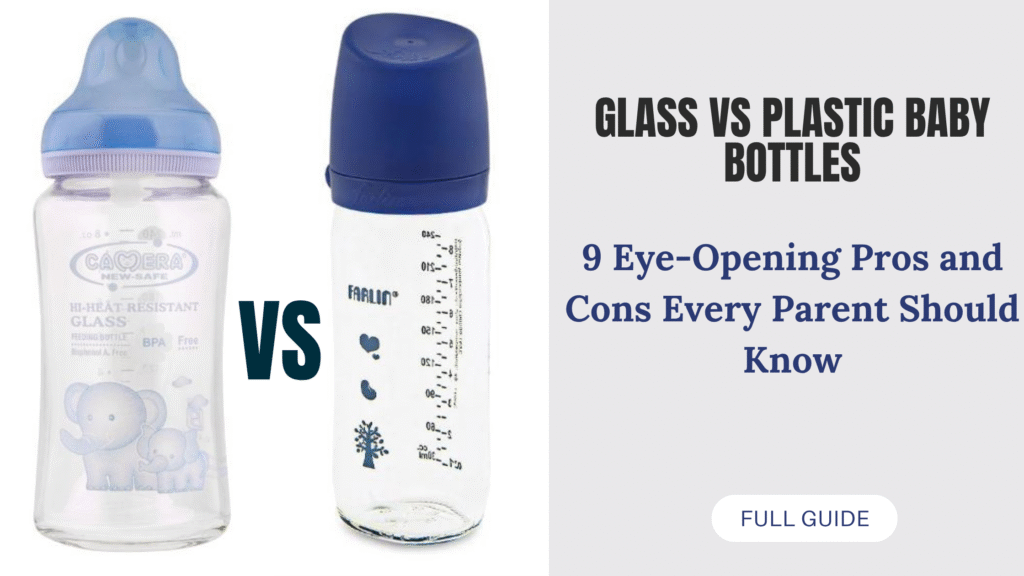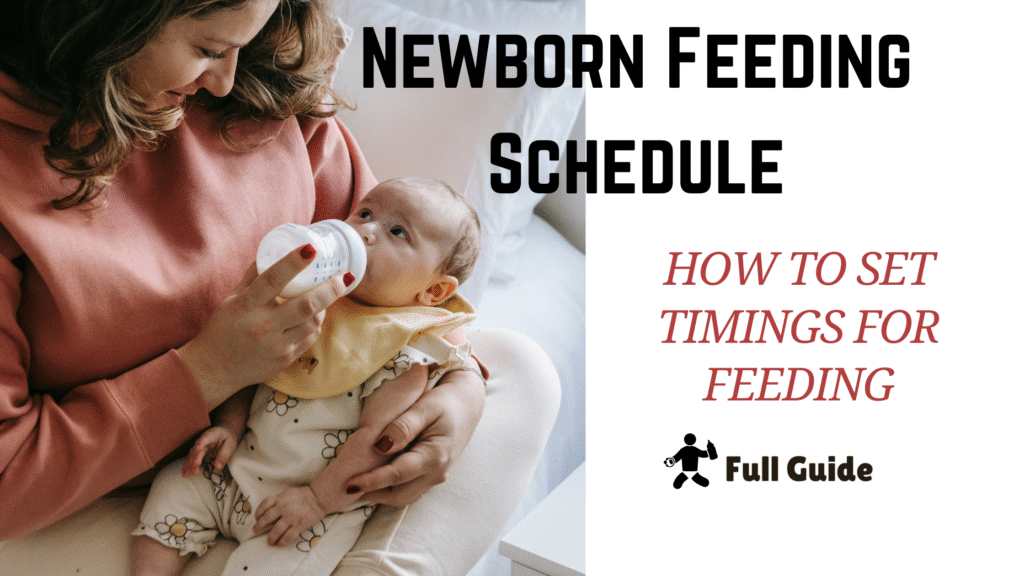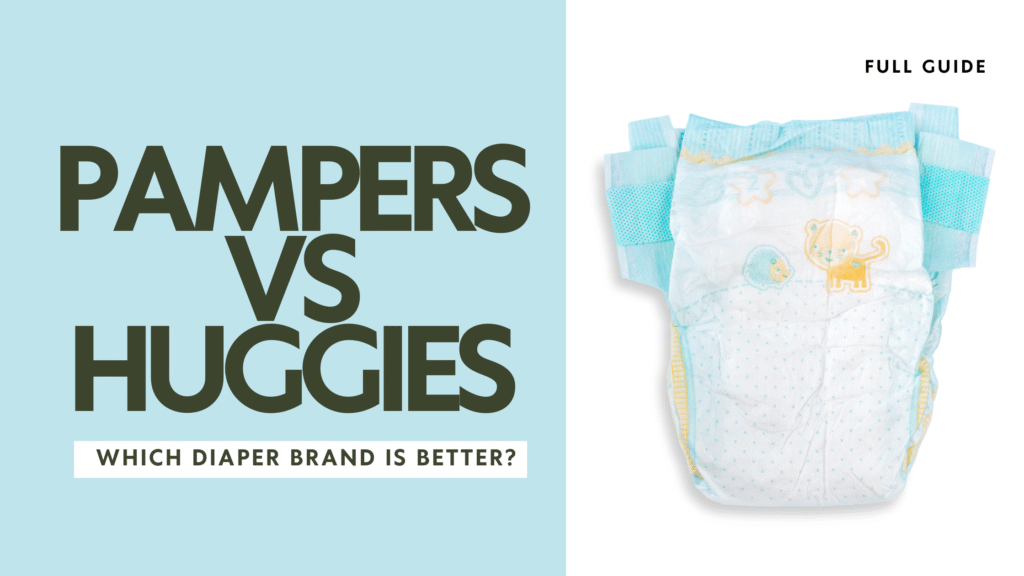Glass vs Plastic Baby Bottles: 9 Eye-Opening Pros and Cons Every Parent Should Know
Glass vs Plastic Baby Bottles: 9 Eye-Opening Pros and Cons Every Parent Should Know Confused between glass vs plastic baby bottles? This 2025 guide breaks down 9 key pros and cons, safety tips, and top product picks so you can choose wisely. That Time I Bought 12 Bottles—and Regretted It It was week two of parenting. I’d barely slept. I panicked and bought a 12-pack of plastic baby bottles I found on sale. By week three, half were leaking, two had warped in the dishwasher, and I was googling “bottle smell won’t go away.” Cue the “aha” moment: maybe not all bottles are equal. If you’re debating between glass vs plastic baby bottles, you’re not alone. And this guide? It’s your fast track to choosing smart—without the stress. Glass vs Plastic Baby Bottles: What’s the Real Difference? Let’s get back to basics: Glass Bottles are heat-treated or borosilicate glass. They’re non-toxic, long-lasting and free of chemicals. Plastic Bottles are lightweight and durable with or without the collar and insert and unbreakable in most cases depending on how and where they are used. But the variations are more than merely about “what it is made of.” It’s not just about lifestyle, of course, but also about safety and convenience. Glass Baby Bottles: Pros and Cons Pros No chemical leaching—safe even with boiling water Easy Clean – (No stinky smell, no stain) Last longer—less likely to scratch or warp Dishwasher + sterilizer safe Cons Heavier—can be tough for little hands Breakable (though most come with silicone sleeves now) Pricier upfront Plastic Baby Bottles: The Good and The Bad The Good Ultra-light weight perfect bed for travel or daycare and any room in your house Budget-friendly Easier for babies to hold The Bad May wear down with frequent sterilizing Can absorb odors or get cloudy May continue to have chemicals such as BPS (substitute for BPA) 9 Key Factors to Consider When Choosing Baby Bottles Here’s a mini checklist to help you select the best bottle for your baby and lifestyle: Safety: Free of BPA/BPS/phthalates? Weight: Will baby be able to hold it comfortably? Durability: Will it withstand teething, drops, heat? Cleanness: How easy is it to clean and sterilize all the parts? Resistance to Heat: Does it resist hot water or microwave sterilizing? Price: Does it suit both your budget now and for the foreseeable future? Eco-Friendliness: Can it be recycled or reused? Pump Compatibility: Will it fit your pump? Nipples: Are there slow, medium, and fast nipples? Pro Tip: Try the 2 glass and 2 plastic bottles to test before you commit to a full set. Glass = Zero chemicals. Period. Plastic = Safer now, but might still break down with time and heat. If you do opt for plastic, here’s what you should look for. The Ultimate Comparison Table: Glass vs Plastic Baby Bottles Feature Glass Bottles Plastic Bottles Chemical-Free ✅ ✅ (if BPA-free) Weight ❌ Heavier ✅ Lightweight Breakable ❌ Risk ✅ No Cleaning ✅ Easy ❌ May retain smells Durability ✅ Long-term ❌ Wears faster Eco-Friendly ✅ Recyclable ❌ Often disposable Travel Friendly ❌ Bulky ✅ Yes Price ❌ Higher upfront ✅ More affordable BPA, BPS & Chemicals: What to (Really) Worry About? Though BPA is now prohibited in baby products in most places, a lot of plastics today are made with BPS and other endocrine disruptors. Glass = Zero chemicals. Period of Plastic =.Safer now, but might still break down with time and heat. If you do opt for plastic, here’s what you should look for: BPA/BPS-free Heat-resistant Replaced every 4–6 months Best Use Cases: When to Choose Glass, When to Go Plastic Choosing the “best” baby bottle often depends on where and how you plan to use it. Choose Glass Bottles If: You mostly feed at home You want a chemical-free option You’re using a dishwasher daily You’re okay with a bit of weight Choose Plastic Bottles If: You travel often or use daycare You need something lightweight You’re on a tight budget You don’t mind replacing bottles more often Pro Tip: Many parents use both—glass at home, plastic on-the-go. Top 10 Glass Baby Bottles Recommended Picks: Check out my top 10 Best Glass Baby Bottles of 2025 Top 5 Plastic Baby Bottles Recommended Picks These are the go-to favorites for plastic-loving parents: 1. Evenflo Feeding Classic Plastic Standard Neck Bottles for Baby Buy on Amazon Value 12-pack – perfect for on-the-go or multiple feedings Constructed with BPA free plastic safe and durable and light weight Standard neck style – simple to clean and can be used with most nipples Proven air venting system – reduces air bubble organization to limit the amount of gas baby ingests and promotes comfortable feeding. Happy pastel colors – praiseworthy colors that are unisex and easy to recognize Leak-proof twist-on cap – when closed, your bottle won’t leak during transport Intended for newborns and up – suitable for slow, medium and fast flow nipples 8 ounces each – perfect for growing appetite stages The Daily Fun Durable Dog Toy are ideal for everyday use – great for daycare, home or on the go Top-rack dishwasher safe – easy clean-up for busy parents These Evenflo Classic Bottles are a great value and reliable products with a history of proven performance in both feeding and maintaining the mother’s milk supply. Great for parents who require reliable performance and ease of use without excess bulk. Simple. Colorful. Reliable. Not everything new parents want in a baby bottle. 2. Chicco Duo 9oz Hybrid Baby Bottle Buy on Amazon Revolutionary hybrid design: Glass inside and plastic outside for strength and safety Invinci-Glass™ interior lining – prevents odor, stains and maintains milk purity Plastic outer shell light weight and shatterproof Intui-Latch™ nipple naturally shaped for easy transition from breast to bottle Anti-Colic Valve: minimizes air intake to help prevent gas and reduce reflux Fits most warmers and sterilizers – feed directly from one container Simple
Glass vs Plastic Baby Bottles: 9 Eye-Opening Pros and Cons Every Parent Should Know Read More »
Guides


